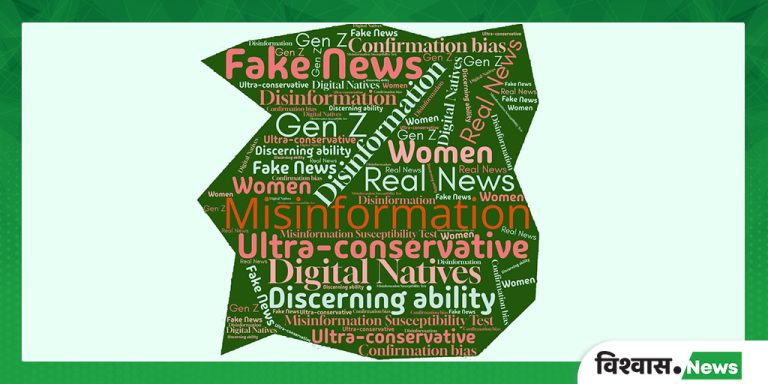The Surprisingly Vulnerable: New Study Exposes Unexpected Groups Most Susceptible to Misinformation
In a world awash with information, discerning truth from falsehood has become a crucial skill. Yet, a new international study reveals a surprising reality: those who believe themselves most adept at spotting fake news are often the most vulnerable. This comprehensive research, involving over 65,000 participants across 24 countries, has identified specific demographics and personality types most susceptible to misinformation, offering valuable insights for combating its spread. The study, titled "Profiling Misinformation Susceptibility," and published in the journal Personality and Individual Differences, employed a novel tool called the Misinformation Susceptibility Test (MIST) to assess participants’ ability to differentiate between real and fabricated news headlines.
The MIST-20 test, utilized in the study, presents participants with a mix of 20 genuine and AI-generated fake news headlines, sourced from reputable media outlets and designed to mimic real-world scenarios. Analyzing the results, researchers found several groups particularly vulnerable to misinformation: non-males, individuals with lower educational attainment, those holding very conservative views, and members of Generation Z (born between 1997 and 2012). Contrary to expectations, higher education did not necessarily translate to better performance on the test. While those with university degrees generally scored higher than those with high school education or less, they were also less accurate in assessing their own ability to discern fake news. This suggests a potential overconfidence among the educated, highlighting the insidious nature of misinformation and its ability to permeate even highly educated minds.
The study also explored the correlation between self-perceived ability and actual performance in identifying misinformation. In general, individuals who believed they were skilled at spotting fake news tended to perform better on the test. Women, in particular, demonstrated a strong ability to accurately gauge their own misinformation detection skills. However, a stark contrast emerged among ultra-conservatives, whose perceived ability did not align with their actual test performance. Gen Z, while demonstrating the lowest overall scores, proved most accurate in self-assessing their abilities, suggesting a degree of self-awareness despite their susceptibility to misinformation.
This research challenges the prevailing notion that digital natives, by virtue of their constant exposure to online information, are inherently better equipped to navigate the treacherous landscape of misinformation. The findings, on the contrary, point to the detrimental effects of the low-quality information often prevalent on social media platforms. Researchers posit that increased exposure to digital environments, characteristic of Gen Z, does not automatically confer higher digital literacy skills. This highlights the critical need for targeted interventions to enhance critical thinking and media literacy among young people. The study’s authors suggest that the constant barrage of often dubious information on social media might actually hinder the development of strong information filtering skills in this demographic.
The study’s findings regarding the susceptibility of ultra-conservatives to misinformation likely stem from the powerful influence of confirmation bias. This cognitive bias predisposes individuals to favor information that confirms their existing beliefs, even if that information is factually inaccurate. When disinformation aligns with pre-existing convictions, it reinforces those beliefs and further entrenches individuals in a cycle of misinformation. This can lead not only to a distorted understanding of reality but also to an overestimation of one’s own ability to discern truth from falsehood. The combination of firmly held beliefs and a tendency to seek confirming information creates a fertile ground for misinformation to take root and spread.
The vast scope of this study, encompassing a diverse and geographically dispersed sample population, lends significant weight to its findings. The researchers’ emphasis on the link between personality types, demographics, and susceptibility to misinformation provides valuable insights for designing targeted interventions. Understanding the specific vulnerabilities of different groups allows for the development of tailored strategies to combat the spread of fake news. These interventions could include educational initiatives, fact-checking resources, and public awareness campaigns designed to reach and resonate with specific demographics. The study’s findings offer crucial guidance for policymakers, educators, and media organizations seeking to address the pervasive problem of misinformation.
The widespread proliferation of misinformation poses a significant threat to informed decision-making, social cohesion, and democratic processes. This groundbreaking research offers critical insights into the underlying factors contributing to misinformation susceptibility, paving the way for more effective strategies to mitigate its harmful effects. By identifying vulnerable groups and understanding the cognitive biases at play, we can develop targeted interventions to empower individuals with the critical thinking skills necessary to navigate the complex information landscape and distinguish truth from fiction. The study underscores the urgent need for a multi-faceted approach to combating misinformation, combining educational initiatives, media literacy programs, and fact-checking resources to foster a more informed and resilient society. The authors encourage further research to explore the nuanced interplay between personality traits, demographics, and misinformation susceptibility, ultimately contributing to a more comprehensive understanding of this complex phenomenon and enabling the development of even more effective countermeasures.


